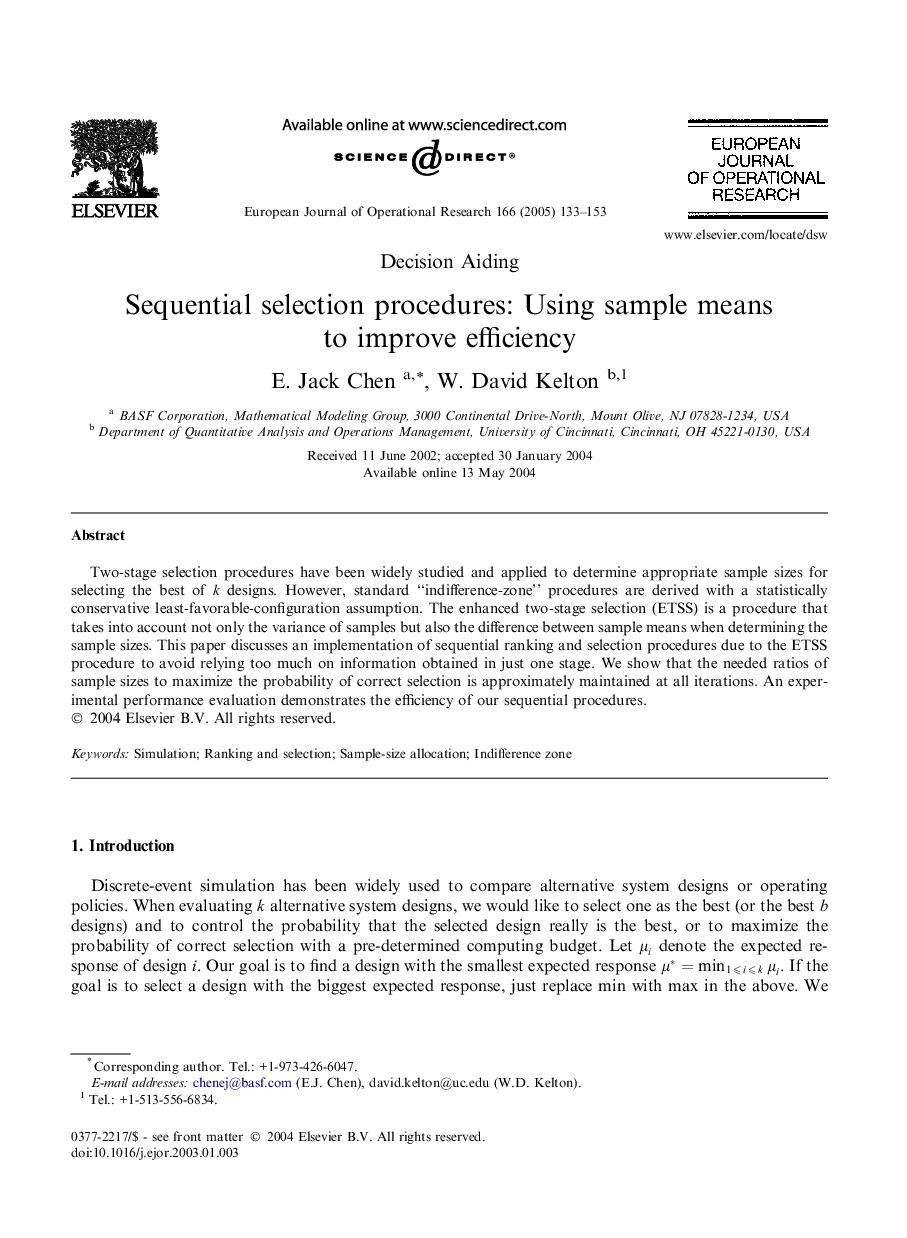| Article ID | Journal | Published Year | Pages | File Type |
|---|---|---|---|---|
| 9663706 | European Journal of Operational Research | 2005 | 21 Pages |
Abstract
Two-stage selection procedures have been widely studied and applied to determine appropriate sample sizes for selecting the best of k designs. However, standard “indifference-zone” procedures are derived with a statistically conservative least-favorable-configuration assumption. The enhanced two-stage selection (ETSS) is a procedure that takes into account not only the variance of samples but also the difference between sample means when determining the sample sizes. This paper discusses an implementation of sequential ranking and selection procedures due to the ETSS procedure to avoid relying too much on information obtained in just one stage. We show that the needed ratios of sample sizes to maximize the probability of correct selection is approximately maintained at all iterations. An experimental performance evaluation demonstrates the efficiency of our sequential procedures.
Related Topics
Physical Sciences and Engineering
Computer Science
Computer Science (General)
Authors
E.Jack Chen, W.David Kelton,
